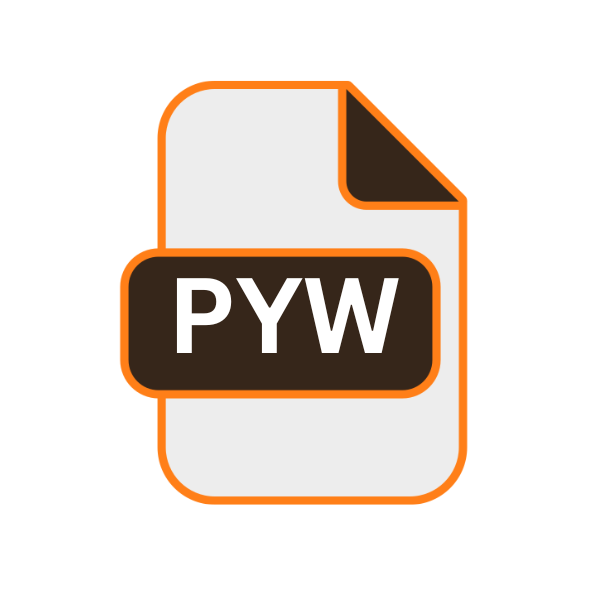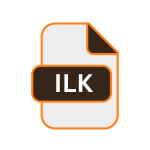.PYW File Extension

Python GUI Source File
| Developer | N/A |
| Popularity | |
| Category | Developer Files |
| Format | .PYW |
| Cross Platform | Update Soon |
What is an PYW file?
The .PYW file extension primarily denotes Python scripts that are specifically created for GUI applications.
GUIs are interfaces that allow users to interact with software through graphical elements such as windows, buttons, and menus, enhancing user experience and usability.
More Information.
The .PYW file extension emerged as a convention for Python scripts dedicated to Graphical User Interface (GUI) applications. It serves to distinguish GUI-specific Python code from standard scripts (denoted by .PY), facilitating clearer organization and recognition within development environments.
Initially designed to streamline GUI development in Python, .PYW files continue to play a crucial role in creating intuitive and interactive user interfaces across various platforms.
Origin Of This File.
Python has been a popular choice for GUI development due to its simplicity and cross-platform capabilities. The .PYW extension emerged as a convention to distinguish GUI-specific Python scripts from standard Python scripts (denoted by .PY extension).
This differentiation helps developers and systems recognize files intended for GUI frameworks.
File Structure Technical Specification.
.PYW files contain Python code that integrates with GUI frameworks such as Tkinter, PyQt, wxPython, and Kivy. These files include:
- Python Code: Scripts written in Python programming language.
- GUI Framework Integration: Code that defines GUI elements, event handlers, and application logic.
- Module Imports: Import statements to include necessary libraries and modules.
Technical specifications may vary based on the chosen GUI framework, but the core structure revolves around Python’s syntax and the specific API calls of the GUI library being used.
How to Convert the File?
Converting .PYW files involve ensuring they can run on different platforms or environments. Here’s a guide on how to prepare and execute .PYW files:
- Prepare Python Environment: Ensure Python is installed on your system.
- Install Necessary Libraries: Depending on the GUI framework used in your .PYW file (such as Tkinter or PyQt), install the required libraries.
- Run the Script: Execute the .PYW file using Python’s interpreter. This typically involves navigating to the directory containing your script and running it using the appropriate Python command for your operating system.
- Platform-Specific Considerations: For mobile platforms like Android and iOS, utilize cross-platform frameworks like Kivy for deployment and execution.
Advantages And Disadvantages.
Advantage:
- Cross-platform Compatibility: Python’s inherent portability ensures .PYW files can run seamlessly across Windows, Linux, macOS, Android, iOS, and other platforms.
- Ease of Development: Python’s syntax simplifies GUI development, making it accessible for both beginners and experienced developers.
- Abundance of GUI Libraries: Various mature and well-documented GUI libraries are available, providing extensive functionalities and customization options.
Disadvantage:
- Performance: Python’s interpreted nature can sometimes result in slower execution speeds compared to compiled languages for CPU-intensive applications.
- Dependency Management: Ensuring compatibility with different versions of Python and GUI libraries may require careful management of dependencies.
- Limited Native GUI Controls: Compared to native GUI development languages (like Swift for iOS or Java for Android), Python’s GUI frameworks may have limitations in accessing platform-specific features.
How to Open PYW?
Open In Windows
- Double-click the .PYW file to launch it, assuming Python is installed and associated with .PYW files.
- Alternatively, you can open Command Prompt and execute the file using Python.
Open In Linux
- Use your file manager to navigate to the directory containing the .PYW file.
- Open a terminal from that directory and execute the file with Python 3.
Open In MAC
- Navigate to the directory where your .PYW file is located using Finder.
- Open Terminal and run the .PYW file using Python 3.
Open In Android
- Utilize Kivy framework: Deploy .PYW files using Kivy’s tools and documentation.
- Package for Android: Follow Kivy’s guidelines to package .PYW scripts into Android applications for execution on mobile devices.
Open In IOS
- Use frameworks like Kivy: Adapt .PYW files using Kivy’s tools for iOS deployment.
- Follow iOS deployment guidelines: Package .PYW scripts according to iOS app development practices and deploy using appropriate tools and frameworks.
Open in Others
- For embedded systems, adapt Python and necessary GUI libraries as per the platform’s requirements.
- Utilize cross-compilation or interpreters compatible with the target architecture.
- Web-based applications can use frameworks like PyWeb to develop and deploy Python-based GUIs.













